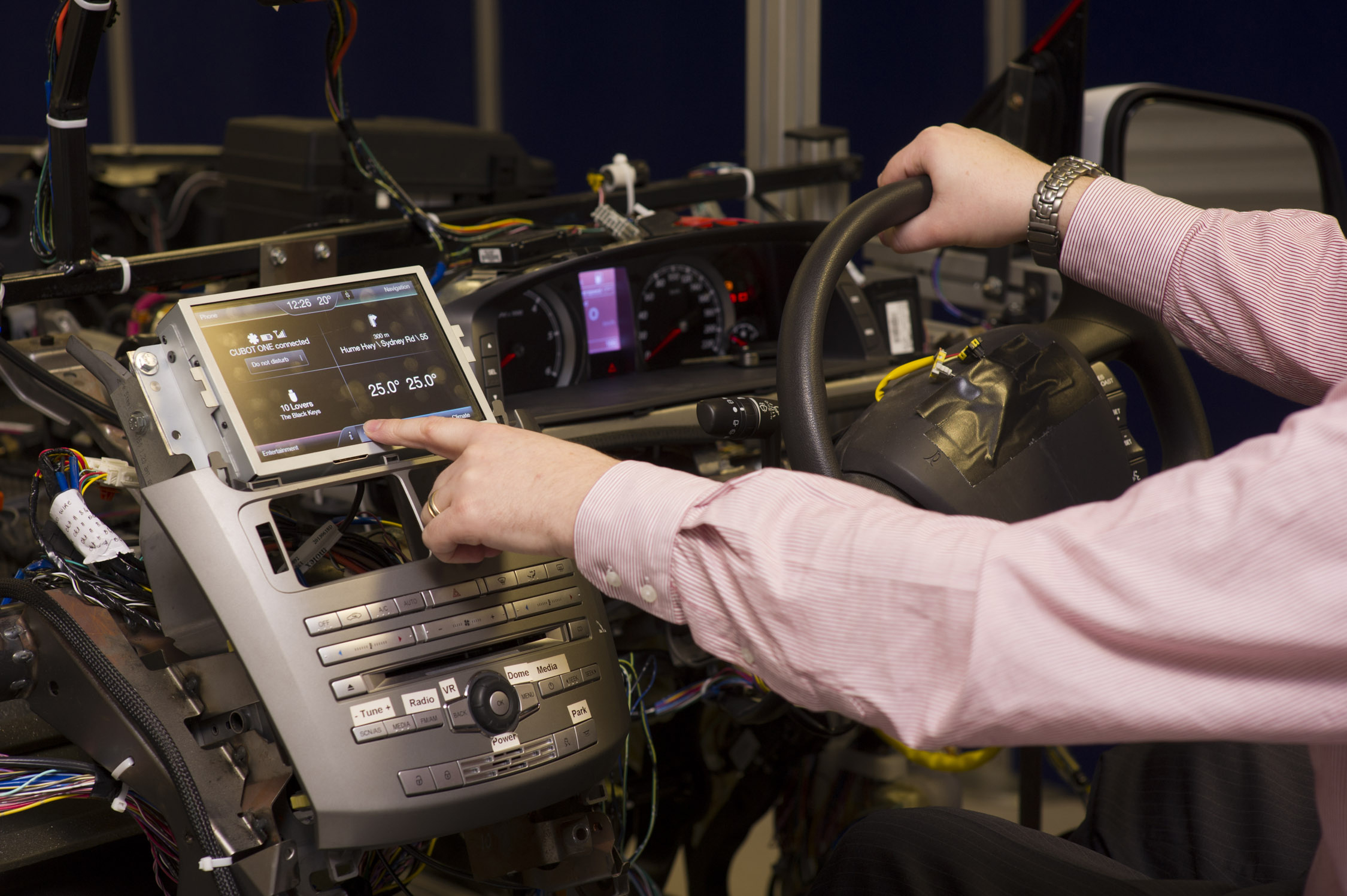FORD is expected to equip its last-ever Falcon and Territory with an electronic guardian angel, giving both cars the ability to phone emergency services after they recognise they have been in a crash.
The new-found ability is part of a radical overhaul of the infotainment system for the locally made pair, due late this year, as the car maker winds towards signing off on more than half a century of local manufacturing late in 2016.
Both the Falcon sedan/ute range and the Territory large SUV will add the latest version of Ford’s SYNC2 infotainment system that blurs the line between smartphone and car, with a radio system that the car maker claims is so intelligent it can recognise as many as 10,000 spoken words, and even interpret phrases such as “I’m hungry” to find the nearest fast-food restaurant.
In a crash, the cars will automatically use a smartphone’s Bluetooth connection to put the driver in touch with emergency services, even letting them know where the car is via its GPS sensors if it detects the driver is not conscious.
In an effort to help cut down on driver distractions, the unit will include a “do not disturb” mode that will divert incoming phone calls to voicemail automatically.
In an effort to cut down on passenger distractions, the Falcon and Territory will include a wireless internet hub that shares a smartphone’s data connection with up to four devices.
Bizarrely, though, while Ford Australia gave journalists an in-depth look at a localised version of the SYNC2 system – which is already in use in the US and Europe and already confirmed for entry to the Australian market this year – inside a mocked-up Territory, the car maker declined to confirm if the local cars are in line to receive it.
So, if the last-ever Falcon and Territory gain the system, they will both stick with an eight-inch colour touchscreen high on the dash.
However, behind it, smart electronics will take voice commands at the push of a steering wheel-mounted button to control most of the things that drivers have traditionally had to do themselves, including setting sat-nav destinations and temperature controls for the cabin.
Ford Asia Pacific multimedia systems supervisor Adrian McGibbon said the Australian version of SYNC2 would miss out on some of the functionality of overseas versions of the system, such as satellite radio, due to “regional variations”.
Rather than piggyback off a smartphone’s Bluetooth connection, SYNC2’s functionality is mainly based on information stored inside the radio head unit that will replace the former much less interactive one.
That means users will need to regularly update their software via an SD card slot if your favourite fast-food joint suddenly closes its doors and you’d rather the SYNC2 system steer you past it.
Ford Australia has not said if it will provide regular updates to the software via its website.
Of benefit to owners, though, will be two USB slots built into a port sitting on the centre console between the front seats, each pumping out two amps to help recharge a smartphone or portable music player much faster than other systems.
As well as the SD card for updating the software, Ford will include a traditional auxiliary input jack.
But the system’s coup de grace is its Apple Siri-style fuzzy logic that can act on spoken thoughts such as “play similar music”, and even allow you to dictate a reply to a text message that the system will send on your behalf.
After its anticipated introduction to the Falcon and Territory range later this year, the SYNC2 system will roll out into other models next year.
These include a facelifted version of the Mondeo mid-size sedan and wagon – the car expected to replace the Falcon – the Focus hatchback, the locally designed and engineered Ranger-based Everest SUV, and V8 versions of the Mustang pony car that will muscle into the space left after Ford Australia’s performance tuning arm, FPV, switches off the tap late this year.





